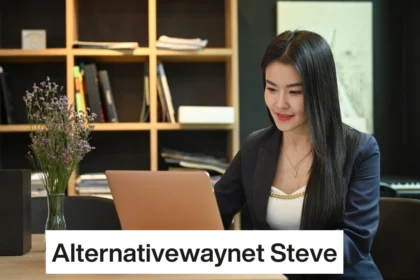Have you ever found yourself caught in a situation where reprimands fly but the impact feels oddly muted? Enter the concept of “When Doubled Mild Reprimand.” It may sound peculiar, yet it holds a unique place in the realm of discipline. This approach can soften the blow while still addressing issues at hand. But what exactly does it entail? And when is it most effective?
Let’s dive into this intriguing disciplinary method and uncover its nuances, origins, common applications, and even some criticisms. Whether you’re a teacher navigating classroom dynamics or a manager aiming to foster teamwork, understanding When Doubled Mild Reprimand might come into play could transform your interactions. Join me as we unpack this mystery!
Understanding the concept of doubled mild reprimand
When Doubled Mild Reprimand might sound like an oxymoron, but it’s a fascinating concept. At its core, this approach involves delivering two gentle admonishments instead of one strong rebuke. The idea is to create a softer atmosphere for addressing behavioral issues.
Imagine a teacher pointing out that students are talking too much during group work. Instead of just saying “quiet down,” they could say, “I appreciate your enthusiasm! Let’s keep our voices down so everyone can focus.” This method acknowledges positive behavior while still conveying the need for change.
The subtlety in double reprimands helps diffuse tensions. It encourages cooperation rather than defensiveness among individuals. By softening the impact, it opens up room for dialogue and reflection—two critical components for growth and improvement. Understanding this dynamic allows us to navigate corrective feedback with empathy and effectiveness.
The history and origins of this disciplinary method
When Doubled Mild Reprimandhas roots that are often overlooked. Its origins can be traced back to early educational institutions, where maintaining order was essential.
In those days, teachers employed various strategies to manage classroom behavior. The When Doubled Mild Reprimand emerged as a gentle yet effective approach to correct students without resorting to harsh penalties.
This method became increasingly popular during the 20th century. Educators sought ways to foster positive learning environments while still addressing misconduct. It balanced discipline and encouragement, making it appealing in diverse settings.
Interestingly, this technique found its way into workplaces too. Managers adopted it as a means of providing constructive feedback while preserving morale among employees.
As society evolved, so did perceptions about authority and correction methods. Today’s educators and leaders continue to explore the implications of using When Doubled Mild Reprimand in modern contexts.
Common scenarios where doubled mild reprimands are used
When Doubled Mild Reprimand often find their place in educational settings. Teachers may use this approach when a student repeatedly disrupts the class but doesn’t warrant severe punishment. It’s gentle yet effective, aiming to correct behavior without damaging self-esteem.
Workplaces also see this method at play. A manager might address an employee’s minor infractions by providing two reminders rather than jumping straight to formal warnings. This helps maintain morale while ensuring accountability.
Parenting is another common scenario where When Doubled Mild Reprimand come into effect. When children misbehave, parents might employ two light corrective measures before escalating discipline. This allows for learning opportunities and encourages open communication.
Community organizations sometimes utilize this technique during volunteer training sessions or group activities, gently guiding members back on track while promoting a supportive atmosphere.
The effects of doubled mild reprimands on individuals and groups
When Doubled Mild Reprimand can create a mixed bag of effects on individuals and groups. On one hand, they often foster an atmosphere of accountability. When people understand the boundaries, they may adjust their behaviors accordingly.
Conversely, these reprimands might lead to confusion or resentment among team members. If not delivered with clarity, recipients could misinterpret the intent behind the message.
For teams, this disciplinary method can either unify or divide. A well-timed When Doubled Mild Reprimand may encourage collaboration to avoid future issues. However, if perceived as overly critical, it can fracture relationships and diminish morale.
Additionally, frequent use of this approach risks desensitizing individuals to feedback. The more someone hears such reprimands without constructive dialogue following them, the less impact they carry over time. It becomes essential for leaders to balance discipline with encouragement for lasting effects on group dynamics.
Criticisms and controversies surrounding this disciplinary approach
Criticisms of the When Doubled Mild Reprimand approach often center on its effectiveness. Detractors argue that it can dilute the impact of discipline. Repeating a mild reprimand may lead to desensitization, where individuals become indifferent over time.
Moreover, some believe this method lacks clarity. When reprimands are mild and repeated, recipients might struggle to grasp the severity of their actions. This ambiguity can foster confusion rather than encourage improvement.
There’s also concern about emotional responses. Recipients may feel frustrated or belittled instead of motivated to change. The repetitive nature may breed resentment, undermining trust in authority figures.
In group settings, these reprimands could create divisions among peers. Individuals receiving consistent mild rebukes might be viewed as less competent or reliable by others, affecting team dynamics negatively.
Alternatives to doubled mild reprimands
When looking for alternatives to When Doubled Mild Reprimand, positive reinforcement stands out. Recognizing good behavior can motivate individuals and create a more supportive environment. This approach encourages learning through praise rather than correction.
Restorative practices offer another route. These methods focus on repairing harm and fostering communication among those involved. They promote empathy and understanding, helping individuals learn from their mistakes without the stigma of punishment.
Setting clear expectations is also effective. By outlining desired behaviors upfront, everyone knows what’s expected of them. This clarity reduces confusion and helps prevent infractions in the first place.
Coaching or mentoring provides personalized guidance as well. Instead of reprimanding, mentors can help individuals develop skills to navigate challenges effectively.
Incorporating team-building activities can strengthen relationships within groups too. Building trust fosters open dialogue, making it easier to address issues collaboratively without resorting to reprimands.
Conclusion: Weighing the benefits and drawbacks of this method
When considering the effectiveness of When Doubled Mild Reprimand, it is essential to weigh both their benefits and drawbacks. On one hand, this approach can foster a structured environment where individuals understand boundaries. It offers an opportunity for correction without resorting to harsh penalties.
However, the potential downsides cannot be overlooked. Critics argue that such reprimands may lead to confusion or resentment among those involved. Instead of promoting growth, they might stifle creativity or breed defensiveness in groups.
The key lies in finding balance. Understanding when and how to apply this method can make a significant difference in its outcomes. Engaging with individuals on a personal level while employing discipline may yield better results than relying solely on standardized reprimands.
As we navigate these complexities, it’s clear that each situation requires careful consideration—one size does not fit all when dealing with human behavior and relationships.








